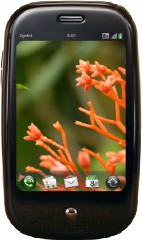 Palm’s upcoming Pre is the first smartphone I’ve seen since the announcement of the iPhone that I might actually consider getting instead of an iPhone. (Not that I need a smartphone right now, but in the event that I do.) Watching the CES announcement drove home the fact that, for the first time, a competing smartphone manufacturer has actually tried to do the iPhone one better, rather than just play catchup. The Pre’s multitasking is an order of magnitude better than the iPhone’s: switching applications on my iPod touch suddenly feels clunky. (Ironically, the lack of true multitasking was one of the major problems of Palm’s last OS.)
Palm’s upcoming Pre is the first smartphone I’ve seen since the announcement of the iPhone that I might actually consider getting instead of an iPhone. (Not that I need a smartphone right now, but in the event that I do.) Watching the CES announcement drove home the fact that, for the first time, a competing smartphone manufacturer has actually tried to do the iPhone one better, rather than just play catchup. The Pre’s multitasking is an order of magnitude better than the iPhone’s: switching applications on my iPod touch suddenly feels clunky. (Ironically, the lack of true multitasking was one of the major problems of Palm’s last OS.)
Early reviews and first impressions are extremely positive — see, for example, Boing Boing Gadgets, CNet, Cult of Mac, Electronista, Engadget’s first impressions and interface tour, Gizmodo’s first look and look at the user interface, Scoble and especially Newsweek’s fine in-depth article — if not outright joyous that (1) beleaguered Palm is not yet dead and (2) finally, someone might actually give Apple a run for its money. But there’s still a lot we don’t know yet, such as what the Pre is going to cost, and how it’s going to work as a phone. Whether the Pre will turn out to be as good as it looks at first blush. The stakes for Palm are high: they’ve bet the company on the Pre, and if it fails, that’ll probably be it for them.
Previously: The Egregious Incompetence of Palm.

 The
The